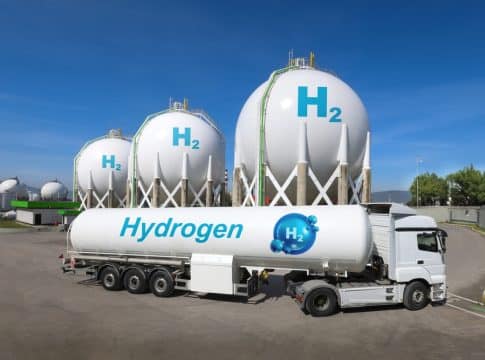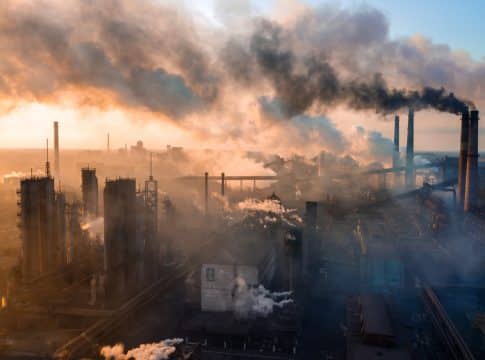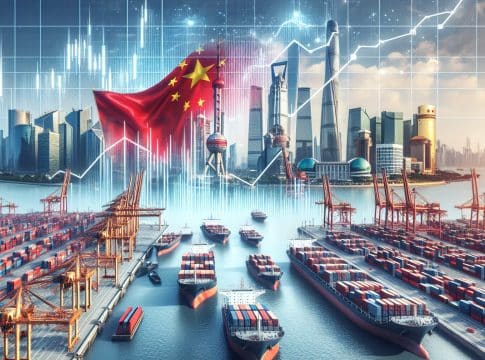Hydrogen’s Big Leap: Can Electrolyzers and Tax Credits Fuel the Green Revolution?
Despite the promising outlook, many hydrogen projects are still in the early stages. Moreover, some face delays or cancellations due to these barriers, including permitting challenges.
Electrolyzer Expansion: Powering the Future of Green Hydrogen
Analysts from S&P Global Commodity Insights report that 1.2 GW of electrolyzer capacity is operational globally, and 2.1 GW began construction in Q2 2024, with 1.5 GW of this growth happening in China.
The country accounts for over 40% of recent FIDs and is home to 60% of global electrolyzer manufacturing capacity, which currently stands at 25 GW annually.
The IEA projects that by 2030, electrolysis-based hydrogen production in China could be cheaper than hydrogen from coal. This is assuming that the global project pipeline is realized.
Image from the IEA Report
IEA Executive Director Fatih Birol emphasized the need for stronger demand-side incentives, warning that current demand targets lag far behind government production goals.
The report calls for policies such as carbon contracts for differences and sustainable fuel quotas to stimulate demand. It also warns that the progress made in the hydrogen sector so far is insufficient to meet climate goals, citing stalled cost reductions due to high raw material and energy prices.
Hydrogen production costs could potentially halve to between $2/kg and $9/kg by 2030 under the IEA’s Net-Zero Emissions by 2050 scenario, closing the price gap with “gray” hydrogen. However, under existing policies, the cost is expected to drop by just 30%.
Global hydrogen demand rose to 97 million metric tons in 2023, mostly in refining and chemicals. However, only 1 million metric tons came from low-emission sources.
The IEA estimates that low-carbon hydrogen production could reach 49 MMt/y by 2030. Yet, achieving this would require an unprecedented annual growth rate of over 90%, a rate even higher than solar power’s fastest growth phase.
Various challenges like financing, regulatory issues, and permitting delays continue to put the project pipeline at risk. Amid these hydrogen production challenges and projections, a big player in the industry continues to show impressive growth.
Nikola’s Hydrogen Trucks Hit the Road Amid Industry Challenges
Nikola, a leader in producing zero-emissions hydrogen fuel cell trucks with its HYLA brand, saw a 22% increase in wholesale deliveries of its hydrogen-powered electric trucks during the third quarter. This achievement signals steady demand for the company’s Class 8 hydrogen fuel cell trucks.
The company delivered 88 trucks to dealers, a record sales quarter, meeting its target of 80 to 100 units. However, it fell short of the 80% surge in deliveries seen in the second quarter.
The Phoenix, Arizona-based company continues to see demand for its hydrogen-powered trucks. As of the 3rd quarter, Nikola has delivered 200 hydrogen fuel cell trucks in 2024, aiming to meet its full-year target of 300 to 350 trucks.
Since launching sales in the 4th quarter of 2023, the company has sold a total of 235 trucks. Nikola remains on track to complete the rollout of revamped battery-electric trucks by the end of the year.
RELATED: Nikola’s HYLA Stations Are Supercharging the Hydrogen Revolution
Nikola CEO Steve Girsky highlighted the importance of this achievement, saying:
“Despite overall market headwinds, Nikola remains focused on our mission to pioneer solutions for a zero-emission world, and we’re doing it one truck at a time.”
Economic Setbacks and Project Delays
While the hydrogen fuel cell company strives through market turmoil, some major developers have scaled back or canceled their green hydrogen projects due to economic hurdles.
Origin Energy, for example, scrapped a hydrogen project in Australia, citing slow market development and high input costs. CEO Frank Calabria explained that technological advancements are still needed to make the investment viable.
Similarly, Norway’s Nel ASA saw a large U.S. order canceled by Hy Stor Energy, reflecting broader industry hesitation. Michael Liebreich, an industry analyst and investor, sees this as a healthy shift, with unfeasible projects being abandoned to focus on more economically sound ventures.
Despite the setbacks, clean hydrogen production is expected to grow by over 40% in 2024, though it will still account for just 1% of global hydrogen demand. While the long-term potential remains, the industry is recalibrating expectations as it faces significant financial and technological challenges.
What’s The Road Ahead for Green Hydrogen?
The hesitation around green hydrogen is partly due to uncertainty regarding the U.S. Treasury’s rules for the 45V hydrogen production tax credits. These credits were created under the Inflation Reduction Act (IRA) to incentivize clean hydrogen production. Developers have delayed their commitments to green hydrogen until these rules are finalized.
Initially, green hydrogen advocates saw the IRA as a significant opportunity, believing that its clean fuel tax credits would make electrolysis-based hydrogen production cheaper than conventional methods. Yet, nearly all of today’s hydrogen supply is derived from natural gas without carbon capture technology, highlighting the slow transition to green hydrogen.
A study by McKinsey & Co., commissioned by the Hydrogen Council, found that 85% of committed hydrogen production capacity in North America through 2030 is tied to carbon capture projects.
While the 45V tax credit is technology-neutral, analysts have noted that incentives for electrolysis are more attractive than those for carbon capture. However, developers of blue hydrogen projects have benefited from carbon capture tax credits under the expanded 45Q program. It offers up to $85 per metric ton of CO2 captured.
While blue hydrogen is gaining ground, the global pipeline for green hydrogen is also expanding, particularly outside the U.S.
Companies like Air Products and CF Industries have proposed green hydrogen projects in the U.S. but have yet to make final investment decisions. Interestingly, Air Products supports the Biden administration’s proposed tax credit requirements, which mandate that hydrogen plants source electricity from new zero-carbon generation facilities. Nonetheless, the company has delayed its $4 billion green hydrogen project in Texas pending the final tax credit rules.
Despite the promising growth in electrolyzer capacity and hydrogen production, significant challenges like regulatory uncertainty and economic hurdles persist. While companies like Nikola are making progress, the road to large-scale green hydrogen adoption remains complex and uncertain. The future will depend on clearer policies and more competitive technologies.
SEE MORE: Microsoft and ESB Launch Groundbreaking Green Hydrogen Pilot to Decarbonize Dublin Data Centers
The post Hydrogen’s Big Leap: Can Electrolyzers and Tax Credits Fuel the Green Revolution? appeared first on Carbon Credits.



